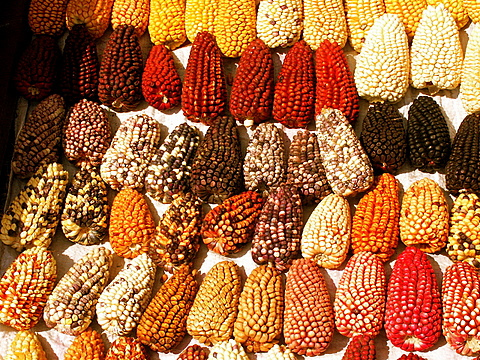South Africa is located at the southern tip of Africa. It is bordered by Namibia, Botswana, Zimbabwe, Mozambique, Swaziland and Lesotho (which is completely surrounded by South Africa). It is a vast country with widely varying landscapes and has 11 official languages, as well as an equally diverse population. South Africa is renowned for its wines and is one of the world's largest producers of gold. South Africa has the strongest economy in Africa, and is an influential player in African politics. In 2010, South Africa hosted the first Football World Cup to be held on the African continent.
1. Table Mountain in Cape Town alone has more floral species than the whole of the United Kingdom.
There are more than 1 500 plant species on Table Mountain in Cape Town alone.This represents more floral species than the whole of the United Kingdom.
Table Mountain is acknowledged as being one of the oldest mountains on the planet
Table Mountain is a flat-topped mountain forming a prominent landmark overlooking the city of Cape Town in South Africa. It is a significant tourist attraction, with many visitors using the cableway or hiking to the top.The mountain forms part of the Table Mountain National Park. Table Mountain is home to large array of fauna and flora, most of which is endemic.
2.South Africa is home to UNESCO's eight World Heritage Sites:
1.The Mapungubwe Cultural Landscape
2.Robben Island
3.The Cape Floristic Region
The Cape Floral Kingdom is one of the world’s six floral kingdoms – and the only one which is wholly contained within a single country.
4.The Richtersveld Cultural and Botanical Landscape
5.Vredefort Dome (the oldest meteor scar in the world)
6.The Sterkfontein, Swartkrans, Kromdraai and environs fossil hominid sites.
7.The iSimangaliso Wetland Park
8.The Ukhahlamba / Drakensberg Park
3.South Africa is the world's largest platinum producer.
South Africa is the world's largest platinum producer, producing more than twice as much as every other country on Earth combined. South Africa has three major platinum bearing areas, the Merensky Reef, the Upper Group 2 (UG2) Reef and the Platreef.
It produce 110,000 kg, 68.32% of world's platinum.
4.South Africa hosted some of the most exciting sport events
Some of the most exciting sporting events that have been hosted in South Africa include the 1995 Rugby World Cup, 2003 Cricket World Cup, 2005 and 2006 Women’s World Cup of Golf, 2006 inaugural A1 GP World Cup of Motorsport, 2009 IPL Cricket, and 2010 FIFA World Cup.
5.Can you think of any other place in the world where two Nobel Peace Prize winners lived on the same street?
South Africa is the only country were a street has produced two Nobel price winners in history. Vilakazi
Street in Soweto was the residential address of two Nobel Peace Prize
winners – Nelson Mandela and Archbishop Desmond Tutu.
6.Did you know South Africa supplies two-thirds of whole Africa's electricity?
South Africa produces around 240,300 gigawatt-hours (865,000 TJ) electricity annually.Most of this electricity is consumed domestically, but around 12,000 gigawatt-hours are annually exported to Swaziland, Botswana, Mozambique, Lesotho, Namibia, Zambia, Zimbabwe and other Southern African Development Community countries participating in the Southern African Power Pool.
7.The Great Karoo desert
The Karoo is an odd place. You either love it or you hate it. Rich fossil beds, spanning over 600 million years set the Karoo apart from any other place on earth and make it the curator of many secrets of evolution.
The Karoo region in the Western Cape is home to some of the best fossils of early dinosaurs. In fact, it is estimated that some 80% of the mammalian fossils found to date were found in the Karoo.
8.Oldest dinosaur nesting site discovered in South Africa
A
dinosaur nesting site discovered in South Africa is thought to be 190
million years old.It tells scientists lots about how dinosaurs went
about breeding.They were found in a strip of rock in South Africa's
Golden Gate Highlands National Park and as the rock becomes weathered,
scientists think even more nests will be found.
9.The South African coast boasts more than 2 000 shipwrecks
There are more than 2000 shipwrecks off the South African coast, most dating back at least 500 years.Details of shipwrecks
10.Did u know SA is only country with three official capitals ?
South Africa has three capital cities: Pretoria is the Executive Capital, Cape
Town the Legislative Capital and Bloemfontein the judicial Capital.
































